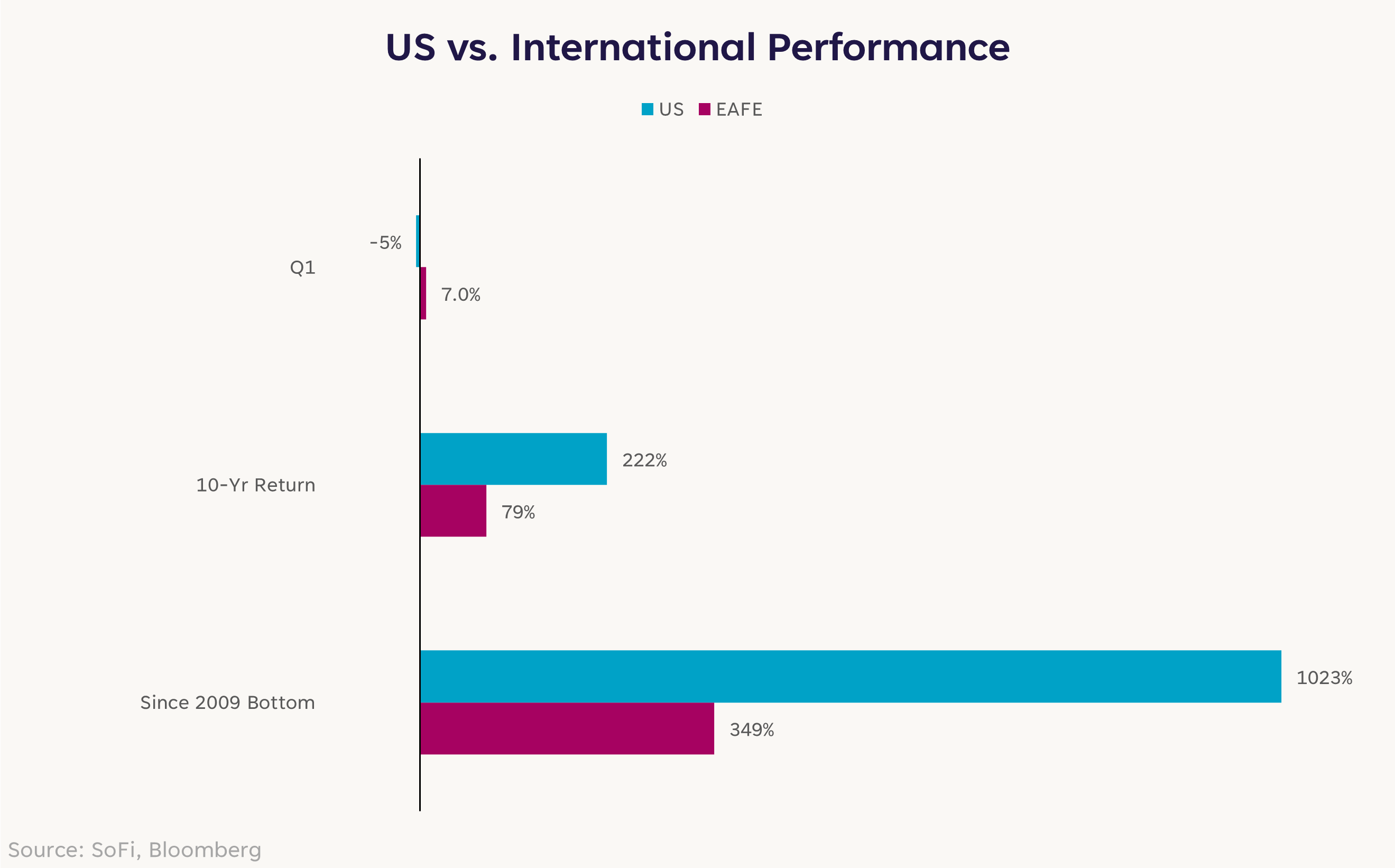March 2025 Market Lookback
March delivered a stark illustration of evolving market dynamics. International markets dramatically outperformed their U.S. counterparts by one of the widest margins in history, as the Magnificent Seven stocks suffered their worst quarter since 2022. Federal Reserve officials downgraded their growth forecasts while expecting higher unemployment and inflation, and consumer confidence and deteriorating business surveys suggest economic headwinds are intensifying. Bond markets reflected the growing caution, with high yield credit spreads widening by the most in a single month since September 2022.
Macro
• The Federal Reserve left the fed funds rate unchanged at a target range of 4.25%-4.50%, citing an uncertain outlook.
• The Fed revised its quarterly economic projections to show lower growth (2.1% to 1.7%), higher inflation (2.5% to 2.7%), and higher unemployment (4.3% to 4.4%) in 2025.
• Unemployment ticked up from 4.0% to 4.1% in February, below expectations.
• Inflation reports were mostly cooler than expected, with the February Consumer and Producer Price indices coming in at 0.2% m/m (2.8% y/y) and 0.0% m/m (3.2% y/y), respectively.
• March consumer confidence plunged to multi-year lows, according to data from both the University of Michigan and the Conference Board.
• Regional Fed bank surveys of executives from manufacturing and service firms indicated the sharpest slowdown in economic activity since 2022.
Equities
• The Magnificent Seven stocks returned -10.2% in March, bringing their quarterly return to -16.0%. Both period returns rank as the worst since 2022.
• International markets’ beat the S&P 500 by 5.1 percentage points in March, one of the biggest outperformances in two decades.
• For a second straight month, forward 12-month earnings expectations rose (+0.7%) while the forward P/E ratio contracted (-6.4%).
• Cyclical stocks underperformed defensive stocks by 2.2 percentage points, the third straight month of underperformance.
Fixed Income
• Short-term Treasury yields fell by 5-10 basis points in March, while longer-term yields were flat-to-up.
• High Yield corporate bond spreads widened by 67 basis points, the most since September 2022, as tariff fears weigh on profit outlooks.
• While inflation-adjusted 10-year yields ended the month where they began in the U.S., they increased by 13-25 basis points in international markets on increased government spending expectations.


Going International
The first quarter of 2025 presented a notable shift in global market dynamics, with international markets outperforming their U.S. counterparts in a departure from recent trends. This divergence can be attributed to several key factors, including heightened fiscal spending initiatives across European economies, and investors pricing in the impact of tariffs on consumer spending.
While this burst of outperformance has prompted some discussion about a possible regime shift in global market leadership, it’s important to maintain perspective. This quarter’s results occurred in the aftermath of a decade and a half of U.S. market dominance.

Of course, every trend begins somewhere. Before the United States’ recent dominance, emerging markets led during the 2000’s commodity supercycle, a period of surging commodity prices driven by China’s rapid development. Sustained leadership transitions often occur alongside big structural shifts that, while not immediately recognizable in the moment, are undeniable after the fact.
Are we on the precipice of such a transition? A potential restructuring of global trade certainly could qualify, but only time will tell if we’re witnessing the early days of a new market regime.
Uncertainty Hits the Fed
It’s early in the year, but “uncertainty” is in the pole position for word of the year in finance. Consumers and investors alike have become gripped by it, and the Federal Reserve is not immune. In their quarterly Summary of Economic Projections, Fed officials also included a qualitative assessment of how uncertain their projections are relative to the average of the last 20 years. What they said probably won’t surprise you.

After declining over the last year or two, officials’ assessments of uncertainty have spiked the most since the initial COVID-19 crisis. History suggests that the Fed is less likely to make interest rate adjustments when the direction of the economy is this unclear. Recent Fedspeak underscores this dynamic, with officials signaling no interest rate changes while the broader economic and regulatory environment remains in flux.
The central bank is stuck between a rock and a hard place. While a “wait-and-see” approach is understandable, it raises the odds that the Fed falls behind the curve if economic conditions deteriorate quickly. That could mean a continuation of the market volatility investors have already been dealing with, and possibly more sharp corrections if the risks of higher unemployment and inflation are realized.
photo credit: iStock/MicroStockHub
Performance data quoted represents past performance. Past performance does not guarantee future results. Market returns will fluctuate, and current performance may be lower or higher than the standardized performance data quoted.